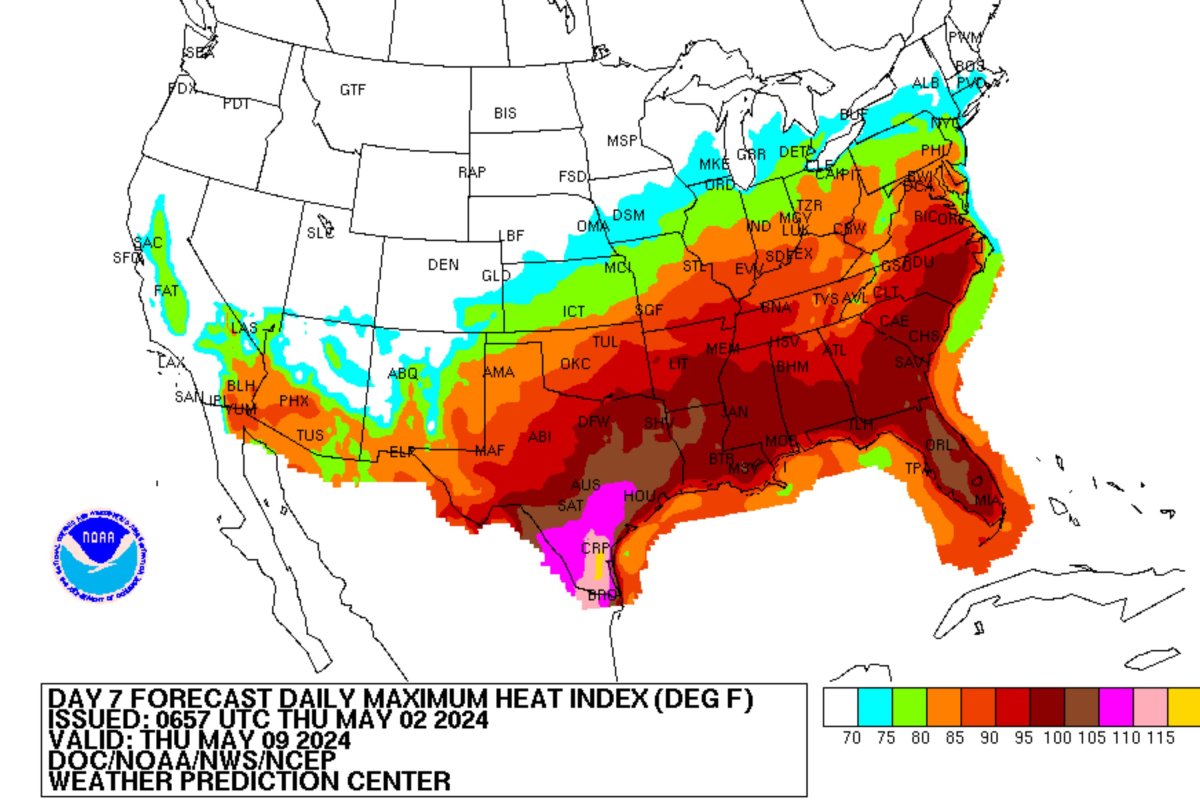The southeastern United States is forecast to get struck by a heatwave next week which could see temperatures reach highs of 120 degrees, enough to start melting the asphalt in roads, in small areas of southern Texas according to one report.
Heat records could be broken in a number of areas, especially over May 9-10, with a National Weather Service (NWS) extreme heat warning coming into effect on Tuesday for some areas and not dissipating entirely until the end of the week.
It comes amid a spat of extreme weather with a tornado striking the state on May 2 destroying a number of homes and vehicles in Hawley. On April 30, there was flooding along the Trinity River in Harris County, Texas, following storms resulting in a voluntary evacuation order being issued by the county’s Homeland Security and Emergency Management Office. And on May 2, local media reported residents south of Houston’s nearby Lake Conroe’s San Jacinto River were told to prepare for significant flooding from the ongoing rain.
By the middle of next week, a heat dome created by a strong area of high pressure is forecast to make its way out of the tropics and into the southeastern United States resulting in a temperature surge forecast to last until Mother’s Day weekend, and potentially beyond for southern Florida.
According to the federal Weather Prediction Center temperatures could exceed 115 degrees for a patch of southern Texas near Raymondville on May 9, with temperatures of over 110 degrees forecast for much of the state’s far south.
Areas around the Rio Grande adjacent to Mexico, a major crossing point for irregular immigration into the United States, are expected to be particularly badly hit with temperatures of 105-110 degrees extending over multiple days.
The Washington Post reports heat indexes are likely to approach 100 degrees around Corpus Christi on May 6, and could surpass this total the following day. The paper adds: “A few spots in interior South Texas could see heat indexes as high as 120 degrees. The high humidity will keep temperatures up at night—with lows only in the mid-70s to near 80.”

A National Weather Service map showing the maximum forecast temperatures across the U.S. on May 9.
National Weather Service
Over this time the NWS office covering Corpus Christi warns: “Since bodies are not yet acclimated to the heat, there will be an increased risk of heat illness.”
According to Sunrise Asphalt, a road construction company, an ambient temperature of 120 degrees is about the point at which asphalt can start to melt.
For May 8, the NWS forecasts extreme heat for a number of patches of southern Texas as defined by its heat risk tool, with major heat expected for a wider area in the south of the state.
According to the federal agency, “This level of rare and/or long-duration extreme heat with little to no overnight relief affects anyone without effective cooling and/or adequate hydration.
“Impacts likely in most health systems, heat sensitive industries and infrastructure.”
Going forward, the NWS warns of a wildfire risk to parts of Texas, Arizona and New Mexico between May 10 and May 16.
During this time, it says there is an “anticipated increased potential for high winds combined with dry soils and antecedent and expected dry conditions supports enhanced risk for wildfires, especially across the Big Bend of Texas, New Mexico, and Arizona, where the National Interagency Fire Center (NIFC) shows moderate risk of significant fire potential.”

Texas wildflowers alongside Highway 16. Temperatures are expected to hit high enough before Mother’s Day Weekend to start melting roads.
wayne stockburger/Getty Images
Newsweek is committed to challenging conventional wisdom and finding connections in the search for common ground.
Newsweek is committed to challenging conventional wisdom and finding connections in the search for common ground.